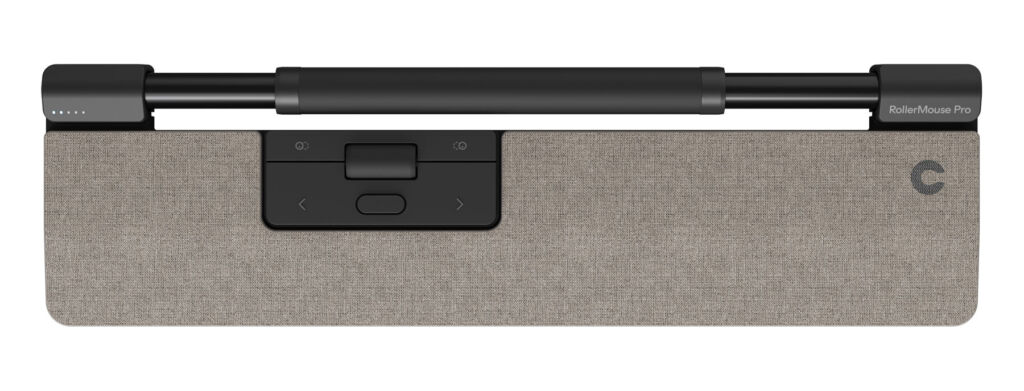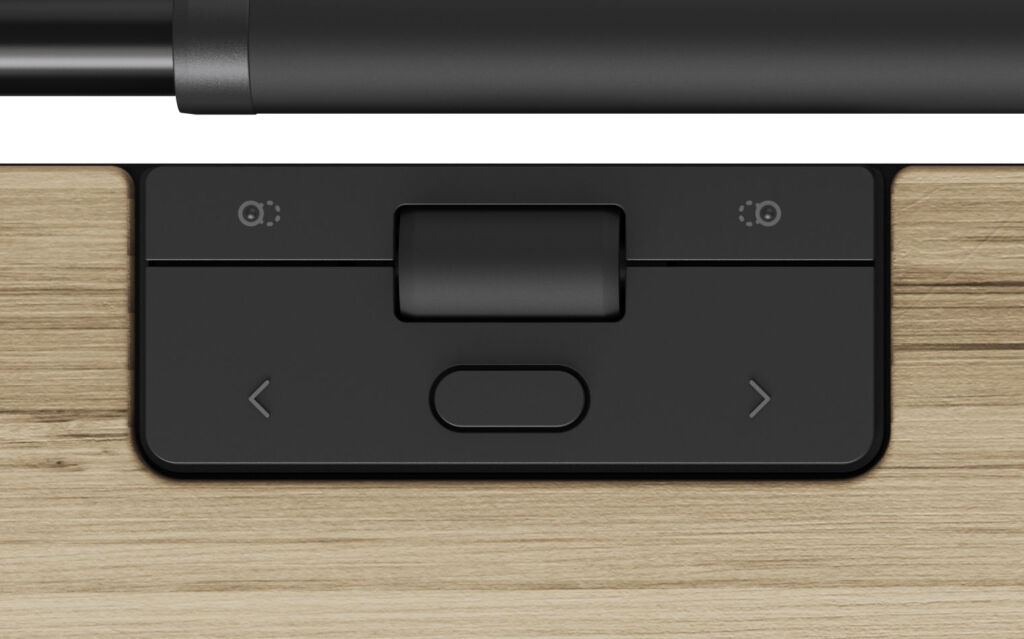
Worldwide, cursors on a computer screen are mainly controlled via two systems: a scroll mouse and a touchpad. Contour, a company specialising in researching and developing ergonomic computer hardware, is seeking to change this. We were keen to learn more and grabbed the opportunity to get ‘hands-on’ with their RollerMouse Pro Wireless.
I spend up to ten hours each day in front of my computer, writing, editing, and designing for the magazine. I often find change difficult, and once I discover a job-related skill, method, or technique that I am comfortable with, switching my working habits to something new is far from easy.
When a representative on behalf of Contour contacted me with an overview of what the company produces, several things excited me. Of primary interest was the uniqueness of their product design and the massive amount of knowledge they’ve built from designing ergonomic products.
Given that I am what some would consider to be of an advanced age, I will pretty much grab any opportunity to test things that could improve and maintain my health.
Although most people who spend many hours behind a computer screen will come away relatively unscathed, it is frequently documented that this is far from the case for everyone. Health problems that can stem from excessive time behind a screed include deep vein thrombosis, issues with vision, and all manner of aches, strains and pains, particularly one that is disproportionately common: repetitive strain injury (RSI).
The best course of action is to ensure you do not develop something like RSI in the first place, which leads us nicely to Contour’s products.
Fortunately, I have been lucky enough to have not encountered the debilitating effects of RSI. However, my sister has, and based on what she has told me, it is not something I want to experience.
Over the past 25 years, Contour has been putting enormous effort into designing products that minimise the chances of getting unnecessary strain injuries. Below, we look at two of the best-known products and see how they can do this. We also discuss my experience with their RollerMouse Pro Wireless device.

Contour’s SliderMouse (shown above) and RollerMouse Pro have something in common: they have all the features you’d find with an ordinary computer mouse. The product’s innovative design means that instead of doing your work with your arms out to the side, your hand remain centred.
In addition, the clever design ensures that the wrist maintains a natural angle at all times, avoiding the ‘bent’ angle, where the entire weight of the hand rests on the little finger side of the wrist, which is the case when working with an ordinary mouse. This feature helps prevent elbow and wrist strain as well as pain in the shoulders and neck.
Contour kindly sent me one of their RollerMouse Pro Wireless sets for this review, and the first thing I noticed upon opening the box was that it looked fantastic. It has a Scandinavian design look to it—minimalist and classy.

My RollerMouse Pro’s wrist rest was bedecked in a beige/brown material, which reminded me of hessian fabric. The ergonomically correct wrist support is mounted with magnets, which means it can easily be swapped for a different design.
Using the RollerMouse Pro was unlike anything I had experienced whilst sitting behind a computer keyboard previously. Cursor navigation is via a wide scroll bar that is centred and located towards the rear of the wristrest and an additional scroll wheel on the main panel. Although it did take some getting used to, after a few minutes, any hesitancy had gone.

The main control panel on RollerMouse Pro is located more towards the left of the device, and the on/off button is on the side. All of the ‘work’ buttons you’d need are housed around the main control panel, which makes copy and pasting, navigation, etc., quite simple.
The panel/buttons can be tailored to suit individual needs; shortcut functions can be added, such as clicking sounds, resistance, and the speed at which the cursor is moved.
Connecting the RollerMouse Pro to my computer was a doddle. I opted to use a typical USB-wired connection, and within seconds, I was using it in place of my standard, now rather sad-looking mouse. If you’re not a fan of wires, you’ll be pleased to learn that it can also be connected via Bluetooth or via an included USB receiver.
The RollerMouse Pro I tested came complete with batteries, which I understand have a life of approximately three months.

Will my ‘ordinary mouse’ now be confined to a cupboard?
The answer to this is no, and my decision is in no way a reflection of the RollerMouse Pro’s capabilities. I think it is lovely to look at, and it is comfortable to use.
For the majority of people, it will make general navigation and day-to-day tasks fun and easy.
Speed and accuracy are critical to my work, and there is a lot of muscle memory involved. The innovative features Contour has put into the RollerMouse Pro will take more time than I can give it to replicate what I do now with a standard mouse.
Another factor preventing me from switching is my desk set-up. I don’t quite have enough space to place in front of my keyboard due to having a large monitor, graphic tablet, big notebook, etc., already sitting one behind the other.
I cannot close out this feature without discussing the price point of Contour’s RollerMOuse Pro and the SliderMouse Pro, which, in comparison to the throwaway varieties of mice, would be perceived as high.
In their defence, these products have been designed and built to last for upwards of ten years, which in these days of disposable technology is no mean feat. If you divide the cost of the products into years and days, the investment is low for a product that can help to prevent life-changing neck, shoulder and elbow issues.
You can learn more about Contour’s innovative products on their website, https://contour-design.co.uk/.

![]()




You must be logged in to post a comment.